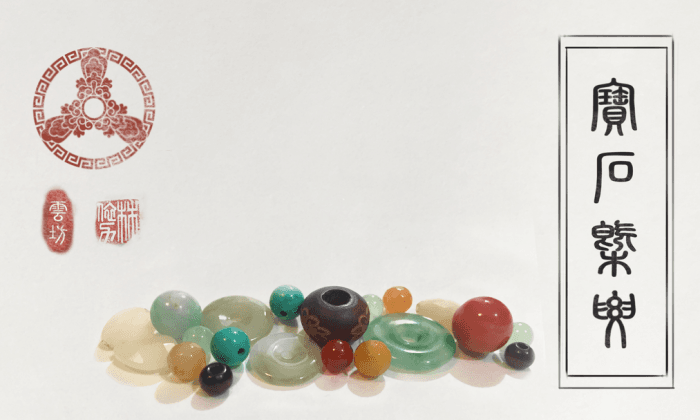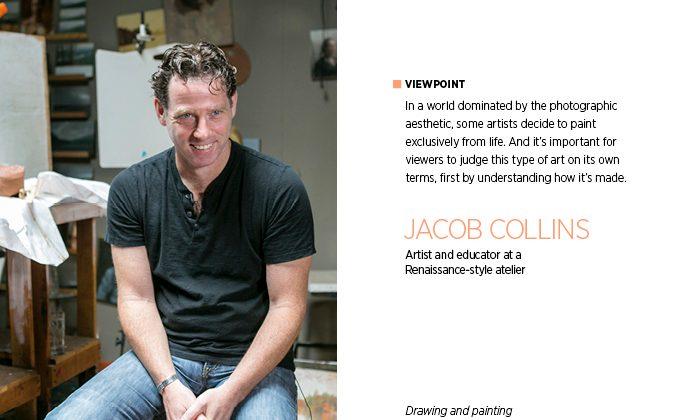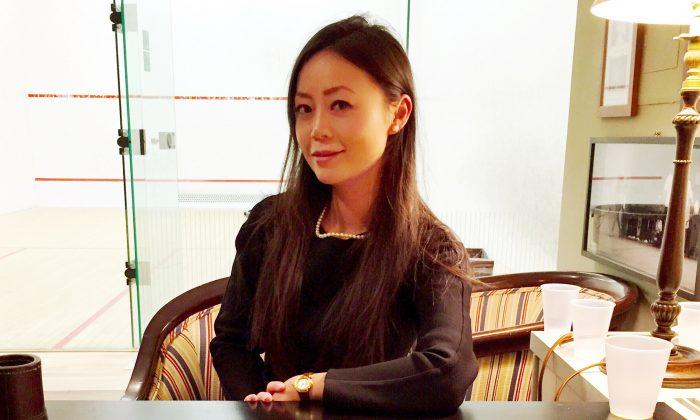This is part 9 of a 9-part series. To see the full series, see At the Confluence
The increasing prevalence of photography has fundamentally changed the way representational art is created and perceived in the modern day. At the Confluence examines how some of today’s artists have responded to the shift.
Leslie Lienau is the founder of The Conservatory for Classical Art in Edmond, Oklahoma. The school teaches methods used in the Italian Renaissance and the Beaux-Arts traditions of the 19th century.
In November 2013 Lienau launched Miira, an iOS app that allows users to take or import photos to work from. Its functions include a grid overlay, guidelines, shape blocking, and freehand sketching. With these tools, an artist (or hobbyist) is able to map out a photo reference for easier drawing.
Using guidelines, artists can create what’s known as an envelope around the object they are drawing so as to accurately define its overall shape. Guidelines also make spatial relationships between objects easier to understand. Using a grid, one can check the exact placement of details, or transfer the image 1:1 onto a similarly gridded canvas. With one tap, the image can be changed to grayscale so as to better assess the values of colors.

For a classical art instructor to create this kind of app is sort of daring, given the stigma that surrounds technology in ateliers.
“There are so many different viewpoints on this issue,” Lienau said in a phone interview. “I deal with it all the time. Some traditionalists say you’re not good enough if it’s not done from life. That can be really hard for a lot of artists.”
A Practical Workaround
Case in point: Edmond’s museums. Edmond, Oklahoma, is a town of roughly 87,000 people. The museums nearby include the Oklahoma City Art museum, and the Fred Jones Jr. Museum of Art at the University of Oklahoma.
“There are some great museums, but they won’t let people set up easels there,” Lienau said. “Maybe they’re afraid of damaging the artwork, so they tell people ‘drawing pads only.’”
That’s a problem because part of the training of a classical painter is to make copies of old masters’ works. If you’ve ever seen someone at the museum attempting to make an exact replica of a Raphael, that’s what she’s doing. It’s for learning, not the black market.
“The benefit is to really learn about the process and understand what made the masters good,” Lienau said. “It’s hard to do that from a photograph. The best way to do that is at a museum. But in my town that’s tough. It’s great if you’re in New York City and you can go to the Met.”
Portraits are another area where having a photo reference has become more than a nice-to-have.
In the old days before photography, if an artist gets a portrait commission but the sitter didn’t have the requisite six hours a week to model, the artist’s best option was to do the job in two segments. First, the sitter would be invited to the studio to sit for the important parts—composition, face, and hands. Then, the artist would dress a mannequin and pose it on the couch for the rest of the portrait.
Photography provided a more elegant solution for the problem. The sitter would still come in, but the sitting would also include a photoshoot so that the artist had a photo to refer to later. No mannequin necessary.
Today, sitting for a portrait is almost unheard of. With sitters’ busy schedules, and models charging more than many individual artists can afford, knowing how to paint from photographs is becoming a necessary skill.
A Teaching Tool
Miira works not only as an art-making aid but also as a teaching tool.
“We want to help artists, students, and teachers,” Lienau said. “It’s really hard to teach a visual language with speech.”
With Miira, a teacher is able to instantly take a photo to demonstrate concepts like making an envelope, instead of standing next to the student, holding a tilted pencil and squinting in the hopes that the student can see just what is being referred to.

“It enables the artist to understand what they’re seeing, and change their thought process,” Lienau said. “It helps you understand what the mistake is.”
Lienau gives the example of a portrait she did where something in the model’s face was off, but she couldn’t figure out what. Using guidelines on the app, she drew horizontal lines from one corner of the mouth to the other, one wing of the nostril to the other, and one pupil to the other—and realized that the eye-line was askew as compared to those of the nose and mouth.
Knowing that, she would know to pay extra attention to avoid this mistake in the future.
The Burden of Choice
Lienau is first to say that the app isn’t for everyone, nor is it a panacea for all drawing woes. In her school, the app is not for tracing, not for snapping photos in a live-drawing class, and not for beginning students. In fact, to someone with little classical art training (this reporter), the app is nearly useless.
“I tell them we are only going to draw from life,” she said. “I don’t let them use my app until they have a handle on what they are looking at—and that’s usually a year to master drawing from life.”
But it’s tough convincing students, especially those who grew up with technology, to work strictly from life. Students at The Conservatory for Classical Art range from 6 to 85 years old, according to Lienau.
That’s why there’s a learning curve for teachers. Not only do you have to teach drawing, you also have to teach sight.
And then there’s shopping for apps. With a number of apps out there that trace, posterize, and adjust hues and saturations, the hardest thing is for students to decide what digital aid to use, when to use it, and why. As the world of fine arts continues to interact with that of technology, literacy in both will become more important than ever.
Tweet @EpochArts with your thoughts on the series using the hashtag #confluence.
The Envelope Technique
The envelope technique is a central feature to Lienau’s drawing, on her app and in her studio. Here, Lienau explains the basic concept of using a visual envelope to develop a drawing.
When I studied with Ted Seth Jacobs at his school in Central France, I learned a systematic approach to drawing from direct observation, or rather, drawing from life. He taught me how to begin the drawing by building an “envelope” around a subject, whether a portrait, a figure, or a still-life.
The envelope encapsulates the entire subject within a simple geometric form made up of five to six straight, intersecting line segments. After the envelope is in place, the other elements and forms can be added within its confines. The envelope is conceptual and somewhat difficult to grasp because one has to draw something that is not actually seen.
On my blog, www.miiraartisttools.com/blogs, I describe the systematic process I use to make a portrait and will explain how my invention, The View Frame, enables the artist to actually “see” the envelope prior to beginning the drawing. I also explain how the tool can be used to measure proportions and see the alignment of forms.







